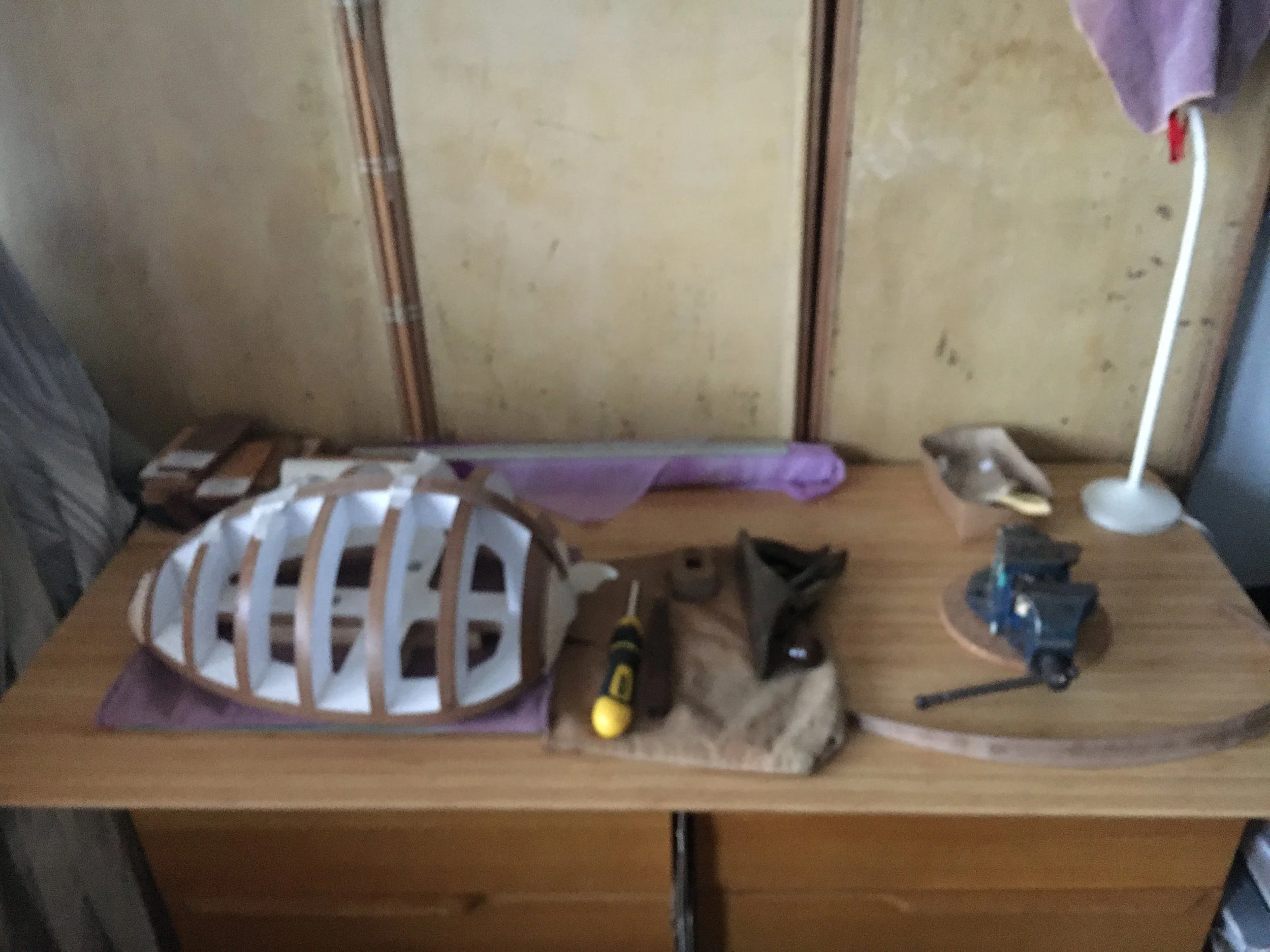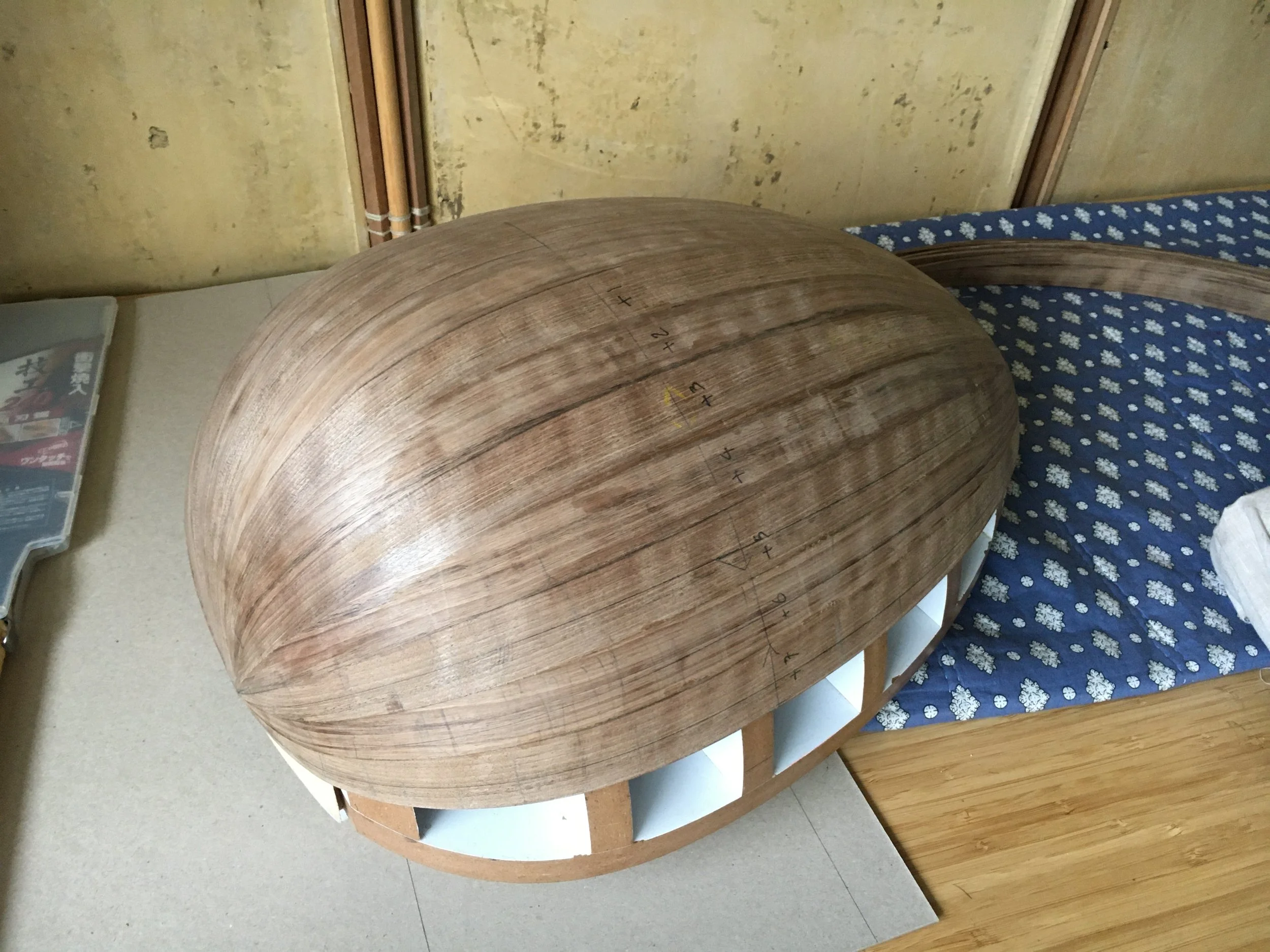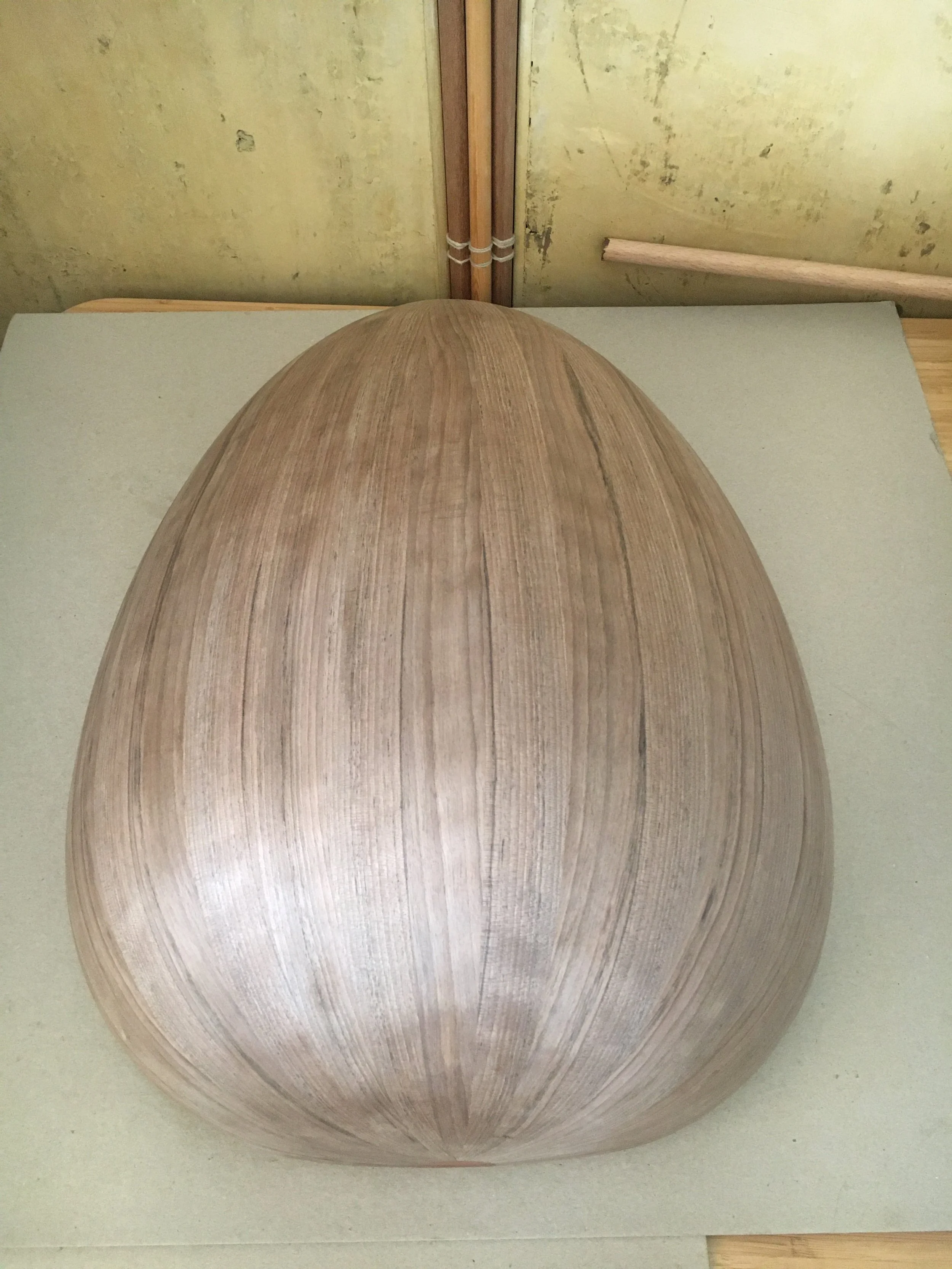














Ever since I first heard the sound of the Oud, I have always wanted to learn how the Oud creates such a beautiful sound. After years of dreaming, I finally came to learn the making process with the amazing teacher and Oud luthier Hamid Ghorbanzadeh. The mythtical process of tree becoming sound unfolds.

Drawing the relationship helped me to makes sense on how one could tune the oud by ear using the harmonics.
Having read the book How Equal Temperament Ruined Harmony (and Why You Should Care) by Ross W. Duffin opened my eyes to the history of varying tuning systems and helped me understand why when the strings are tuned to the 4th on harmonic tuning, one can feel the Oud bowl vibrate more.

The oud profile consists of varying sections: the gentle radius curve starting from the neck, transitioning to a slightly tighter readius at the middle, and then curving around tightly to create the belly portion of the Oud bowl and then flattening out to meet the end block. The shape of the Oud bowl, so familiar to the eyes from playing reveales its geometry through the making process.

This first bowl is made out of walnut, I also love the sound of the Ouds made out of Walnut bowl, dry and not so echoey.
Walnut as timber is not too hard and has a good flexibility, which is a very helpful quality when learning how to bend the timber for the first time. Water and heat are your friends.

Having a vice and a strong table (in this case, a table top propped up onto the clothes drawers...) could be a great start of a workshop!

Like anything else, repetition is a key. This first oud bowl is made of 19 ribs. I have bent 7 trial ribs before moving onto the first one. Through doing, my eyes and hands started to internalise the profile curvatures...

After the rib bending, the next step is to understand how to create a flat side profile. Here, checking the flat plane of the rib against the the flat surface of the table saw to see if any light comes through the rib. If no light, a good news. Planing of the rib is done through running the rib along an upside down plane: Hamid-sensei says "Trust the plane and make friends with the plane."

Rushing is never a good idea when bending a rib, I learnt this lesson when one of the ribs cracked... I was applying too much pressure in one go. It resulted in a pattern, which looks a bit like a lightening...

My first rosette design, geometry made of circles and straight lines. Three is a nice number, I thought. The central motif is based on a symbol called (tomoe) 巴, often used to adorn the surface of a Japanese Taiko drum and also seen at the end of roofing tiles in Japan. Some says it symbolises the cycle of life.